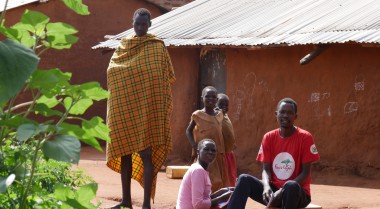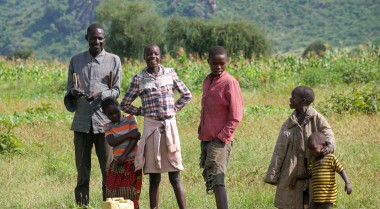
Peacebuilding in the Era of Climate Change: What are the Most Urgent Needs?
The risks posed by climate change are real. Whilst it is rarely the primary cause of conflict, it can act as a risk-multiplier, exacerbating existing vulnerabilities. It is also important to recognise that these impacts are not evenly distributed, affecting women, youth and men in context-specific ways. The risks are greatest in communities with weak infrastructures that are unable to absorb the additional stress and adapt to the changing climate of the world. With this in mind, the impacts of climate change pose a significant threat to peace and human security, making peacebuilding and conflict prevention more urgent than ever. In this blog series, we highlight how local peacebuilders are applying conflict prevention and peacebuilding lenses to climate change to build resilient social structures.
The impact of climate change on the work and lives of local peacebuilders
Climate change is causing a serious humanitarian impact. In regions such as the Pacific, Southern Africa, and the Caribbean, climate-induced disasters present one of the greatest threats to livelihoods, security, and well-being. These regions face a climate crisis: from rising sea levels to intensifying cyclones, to the increasing prevalence of droughts and floods.
Environmental injustices connected to the exploitation of natural resources pose serious risks to human rights defenders. Across the 15 GPPAC regions, we have seen that the overall effect of climate change will exacerbate existing conflicts, as greater stress on natural resources undermines the capacity of nations to govern themselves.
Local peacebuilders have knowledge and expertise to tackle climate-related security risks
As climate change continues to have adverse effects on communities, many local peacebuilding organisations have risen to the challenge. Peacebuilders address the issues of climate change by adapting their work to support prevention, awareness-raising, and ensuring the preparedness of their communities. For instance, GPPAC members in Zimbabwe have formed a group that engages with religious leaders in local communities to raise awareness on climate change and find responses to its impact. In Uganda, The Center for Conflict Resolution (CECORE) engages with young men and women, equipping them with specific farming skills to protect the environment and mitigate potential conflict over natural resources. Another example of a GPPAC member ensuring the implementation of climate security policies is the Pacific Conference of Churches that strives to build climate change resilience by integrating the psychological, spiritual and cultural factors in the contexts of displacement and relocation for both those being displaced and the receiving communities
Collective action is needed to strengthen responses to climate-related threats to peace
Climate change requires joint action. Local peacebuilders call for stronger support of the international community, and the commitment of national governments to take the challenge of climate change seriously. For instance, GPPAC members in the Pacific provide clear recommendations on how to advance regional policy frameworks. All international, national, and local stakeholders need to ensure the implementation and strengthening of existing frameworks on climate change, while at the same time building strong and sustainable infrastructures. This is why GPPAC Pacific has supported the establishment of the Shifting the Power Coalition that focuses on strengthening women’s capacity to engage in policy and decision making for national and regional advocacy. Only with proper funding can peacebuilding action on climate change be achieved.
To mitigate the harm caused by climate change and prevent violence and conflict, steps must be taken at both the local and global level.
At the local level:
- The development, monitoring, and evaluation of every climate-related policy benefits from meaningful inclusion of community members;
- Continuous efforts to raise community awareness of the effects of climate change and capacity building on sustainable practices are held;
- Indicators of climate-related risks are included in early-warning and risk monitoring.
At the global level:
- Climate change is being systematically integrated into peacebuilding policy;
- The most vulnerable communities and their livelihoods are prioritised in response;
- An inclusive and gender-sensitive approach to an integrated peace-development humanitarian response to climate change is carved out;
- Cross-sectoral collaboration to empower development and humanitarian stakeholders to support peacebuilding and vice versa;
- Effective coordination between all actors.

